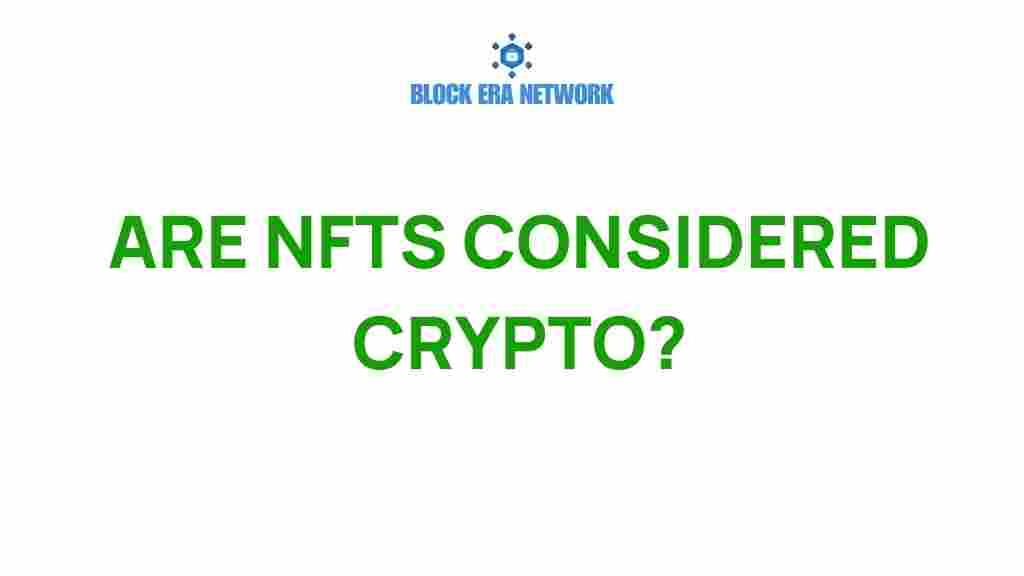Are NFTs the Next Frontier in Cryptocurrency Innovation?
The digital landscape is constantly evolving, and with it comes the rise of NFTs (non-fungible tokens) as a major player in the world of cryptocurrency and digital assets. These unique digital items have transformed how we perceive ownership, creativity, and investment in the digital realm. As we delve into the world of NFTs, we will explore their relationship with blockchain technology, their impact on the art market, and the myriad investment opportunities they present.
The Emergence of NFTs
To understand why NFTs are considered a frontier in innovation, it’s essential to grasp their fundamental characteristics:
- Uniqueness: Unlike cryptocurrencies such as Bitcoin or Ethereum, NFTs are unique and cannot be exchanged on a one-to-one basis.
- Ownership: NFTs utilize blockchain technology to verify ownership, ensuring that digital ownership is transparent and secure.
- Variety: NFTs can represent various types of digital assets, including digital art, music, virtual collectibles, and even virtual real estate.
This uniqueness and versatility have propelled NFTs into the spotlight, attracting artists, collectors, and investors alike.
Navigating the NFT Landscape
Understanding the NFT ecosystem is crucial for anyone looking to explore this new frontier in cryptocurrency.
1. Creating an NFT
To create an NFT, follow these steps:
- Choose a blockchain: Ethereum is the most popular choice, but other blockchains like Binance Smart Chain and Flow are also viable.
- Select an NFT marketplace: Platforms like OpenSea, Rarible, and Foundation allow creators to mint and sell their NFTs.
- Create your digital asset: This could be art, music, or any digital file.
- Minting the NFT: Upload your file to the chosen marketplace and follow the prompts to mint your NFT.
- Set your price: You can choose to auction your NFT or set a fixed price.
2. Buying an NFT
If you’re interested in purchasing an NFT, follow these steps:
- Set up a digital wallet: A wallet that supports the blockchain you’re using is essential. MetaMask is a popular choice for Ethereum.
- Purchase cryptocurrency: Buy Ethereum or the relevant cryptocurrency to use for your NFT purchase.
- Connect your wallet to a marketplace: Link your wallet to an NFT marketplace like OpenSea.
- Browse and purchase: Explore the listings and acquire the NFT that catches your interest.
Investment Opportunities in NFTs
The rise of NFTs has opened up numerous investment opportunities. Here’s a closer look:
- Diverse portfolio: NFTs allow investors to diversify their portfolios by adding digital assets.
- Potential for high returns: Some NFTs have sold for millions, providing substantial returns on investment.
- Support for artists: Investing in NFTs can empower artists and creators directly, fostering a new economy.
However, potential investors should be aware of the risks involved, including market volatility and the need for thorough research.
The Art Market and NFTs
The art market has been one of the most significantly impacted sectors by NFTs. Here are some key aspects:
- Accessibility: NFTs have democratized access to art, allowing anyone to buy, sell, or create art without the barriers of traditional galleries.
- Royalties: Artists can earn royalties on secondary sales, ensuring they benefit from their work long after the initial sale.
- Digital provenance: The blockchain technology behind NFTs provides an immutable record of ownership and authenticity.
Challenges and Troubleshooting in the NFT Space
As with any emerging technology, there are challenges associated with NFTs. Here are some common issues and how to address them:
- High gas fees: Transactions on the Ethereum network can incur high fees. Consider using layer-2 solutions or alternate blockchains with lower fees.
- Scams and fraud: Always verify the authenticity of NFTs and the credibility of the seller. Research is essential.
- Market volatility: Prices can fluctuate wildly. Be prepared for potential losses and invest only what you can afford to lose.
Future Trends in NFTs
As NFTs continue to evolve, several trends are expected to shape their future:
- Integration with virtual reality: As VR technology advances, NFTs could play a significant role in virtual environments.
- Expansion into gaming: NFTs are set to revolutionize gaming by allowing players to truly own in-game assets.
- Increased regulation: As the market matures, regulatory frameworks may emerge to protect consumers and investors.
For more insights on the future of digital ownership and NFTs, check out this comprehensive guide.
Conclusion
In conclusion, NFTs represent a significant leap forward in the realm of cryptocurrency and digital assets. Their unique characteristics and the underlying blockchain technology have transformed how we understand digital ownership and investment in virtual collectibles. While the market presents exciting investment opportunities, it is crucial to navigate the potential risks carefully.
As we continue to explore this new frontier of innovation, it is clear that NFTs are more than just a passing trend; they are reshaping the landscape of art, collectibles, and digital assets for the future.
This article is in the category NFTs & Digital Collectibles and created by Block Era Network Team

1 thought on “Are NFTs the Next Frontier in Cryptocurrency Innovation?”